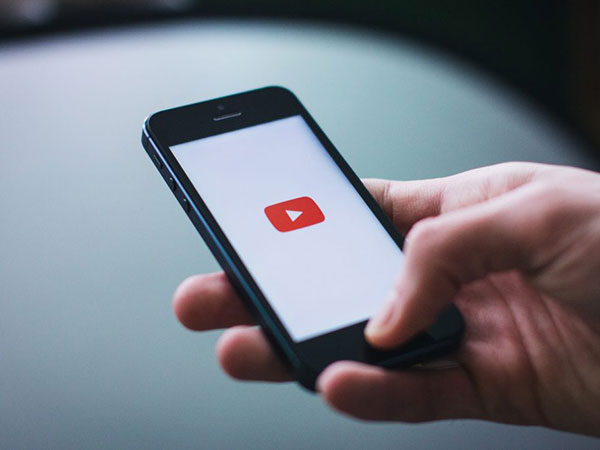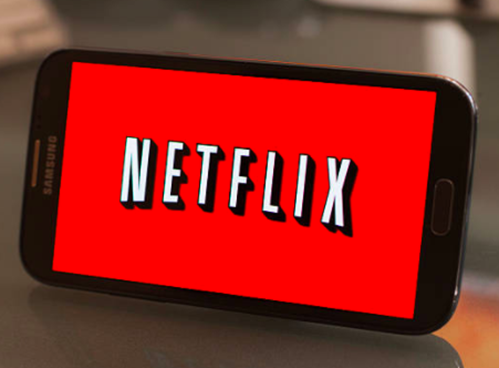In the Digital Age of multitudinous data and online streaming, entertainment is now delivered in a more unique way than it ever was before. Thanks to streaming sites like Netflix and Hulu, TV shows and films are more accessible than ever and their online viewerships continue to rise. Sites like Spotify, Pandora and YouNow have changed the way we listen to and purchase music as well. With today’s fast-paced, 24/7 lifestyle, along with the technology that is available, it is becoming increasingly convenient to satiate our entertainment needs online.
In this heavily digitalised world where people live on busy schedules, Video on Demand (VOD) sites such as Netflix have already caused a vast shift from terrestrial and cable TV. Music streaming sites such as Spotify have further altered the increasingly online consumption of music by charging an overall subscription per month instead of charging per song, and by linking it to social media sites such as Facebook.
Online games of all types such as puzzle, role-play, poker and casino games have also become vastly successful over the last two decades. In fact, even live-streaming other users playing these games started to become popular and led to the creation of Twitch, which had the fourth largest share of peak internet traffic in the US.
But the more we stream, the more information is collected about us online: our habits, our likes, our location etc. This digital transformation that the world is experiencing is also changing the way big data is gathered and analysed. Internet traffic alone generates vast amounts of data that can be converted into insightful information, and by 2019 experts predict that video streaming will account for 80% of all Internet traffic. It is estimated that the internet which, like the universe, is ever expanding, will account for over 44 trillion gigabytes of data by the year 2020.
All of this online media streaming has so far enabled a wealth of data to be gathered about consumers by companies like Netflix for analysis in order to help them make multi-million dollar decisions when deciding which TV shows to air and to make recommendations to its users.
But how do streaming services such as Netflix and Hulu utilise such data? The appropriate analysis of the right data helps to improve a company’s decision-making when it comes to exploring new sources of revenue and personalising the user experience – our experience. Various techniques exist for the analysis of big data but a popular method employed by the entertainment industry is web analytics.
Especially helpful for VoD companies, Web analytics is the term coined to track a website’s traffic along with its web page views and assess the ways in which the user interacts with its content. For instance, this information can be gleaned from data gathered by customers directly interacting with a company’s website, with Google Analytics being the most frequently used tool to achieve this end.
Netflix uses highly individualised data from users’ accounts along with web analytics to gain a more in-depth understanding of which TV shows are more popular by monitoring everything from the completion rate of shows to how quickly viewers can get through a series. A key factor they may watch out for, for instance, is a pattern of “binge-watching” for particular series. In fact, it is mainly thanks to big data that Netflix decided to run House of Cards based on viewership data analysis.
While analytical figures such as viewer numbers have always been available with terrestrial and cable TV, the data produced usually wasn’t instantaneous or freely available and a lot of the data obtained was of an approximate and speculative nature. This is because the numbers might not always have been a true reflection of a television show’s popularity, as households could leave their televisions switched on and not be aware of what was being displayed. The individual element was also removed as televisions in a household are likely to be watched by more than one person.
This is in direct contrast to today’s streaming culture where most of the time, as we watch our favourite TV shows on platforms like these, we are inadvertently helping to compile reports that lead to more shows being produced that we will like or to further recommendations based on our tastes. But this is not the only way that we are influencing what kind of content becomes available to us – we can also play an active part on social media.
Social media platforms are especially important when it comes to gathering information about customers or the general public. Several third-party applications are geared for this purpose such as Unified Social which harnesses Facebook’s newsfeed and gathers various data such as Likes and Comments. It can also be set up to analyse similar Facebook data for competitors. It can measure reactions and preferences to everything from products, music and TV.
For example, in the case of the latter, TV and film producers are focusing more and more on including original high quality content in their shows by leveraging the power of social media analytics. They can use platforms such as Facebook and Twitter to gain incredibly useful insights into what consumers think of their shows and it also enables them to communicate directly with the viewers if they choose. Never before has the viewer had so much influence over what they watch or such a tailored experience.
It’s not just TV that is changing either. Big data is helping music streaming sites and apps such as Spotify and iHeartRadio. By using web analytics, most music streaming sites don’t just allow users to create their own playlists and custom radio stations, but they can also make automatic suggestions based on the users’ data, in much the same way sites like Netflix do. Spotify even has its own data and analytics hub available to managers, labels and artists to gauge listener trends.
However, while it may still be tricky to personalise Netflix, Spotify and other streaming accounts with multiple users, data-gathering on mobile devices can be even more precise than with computers or smart TVs due to their more personalised nature. The use of mobile devices for streaming entertainment is growing exponentially – more than 50% of all mobile data traffic is due to watching streamed entertainment. By 2020 it is expected that 75% of all mobile data traffic will be used for this purpose.
However, it’s not just on-demand streaming that is helping to change the entertainment industry, but also live streaming.
A new way we are streaming videos and music is by using a new live streaming platform called YouNow. This platform is both a website and an interactive mobile app through which any smartphone or webcam user can broadcast. More than 50,000 hours’ worth of broadcasting is produced each day through this site. User sessions per month total more than one million and musicians are finding it particularly useful to share their talent while the chat feature also them to communicate with their listeners. In some cases this platform has turned out to be a lucrative source of revenue.
YouTube is also utilizing live streaming technology to bring events such as the yearly Oscar Watch Party and the Miss Universe Pageant to computer and mobile device screens. For people who may not own a TV, watching awards shows is easier than it has ever been. But even after these events have long passed, the data gained from viewers in terms of viewing time, interactions and comments can still be used for the purpose of analytics which could help define these shows for the future.
The world is changing and so is entertainment. Big data will help propel entertainment deeper into the 21st century just as it is currently doing so with all business. At no other point in time has the consumer had so much direct influence over what they choose to watch, listen to or read. Big data is now intrinsic to this industry and its methods of analysus can only be refined and improved.

New tech portal launched to promote robotics, AI and STEM education
Robotics...












